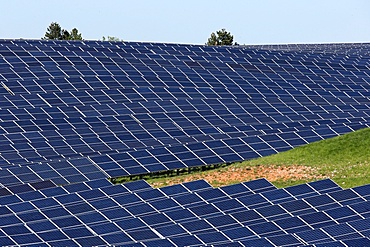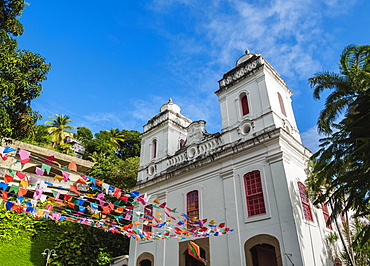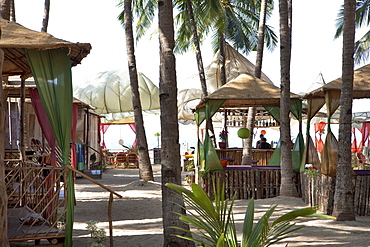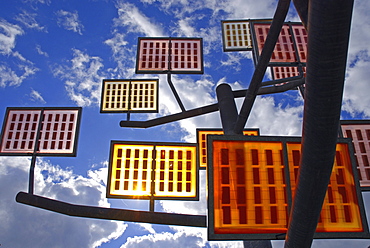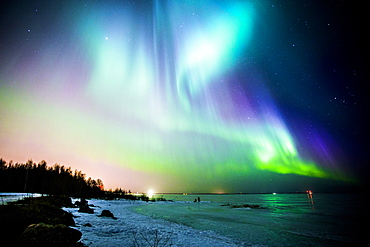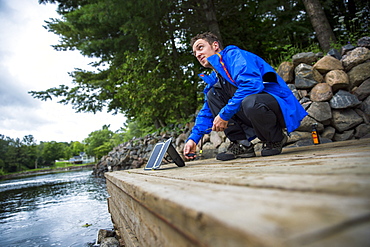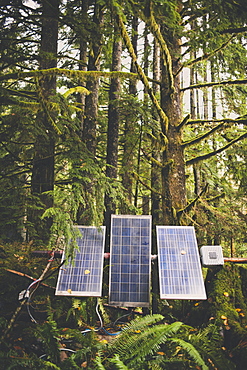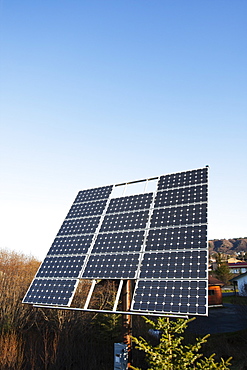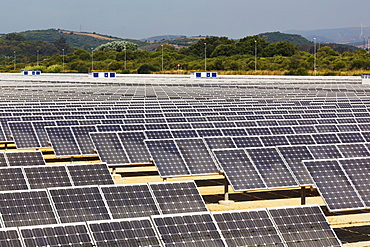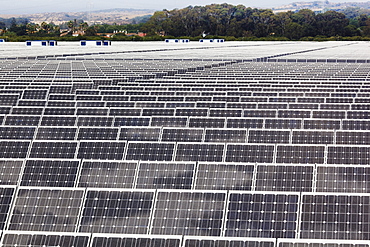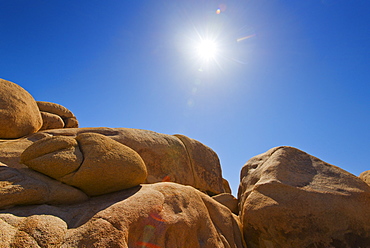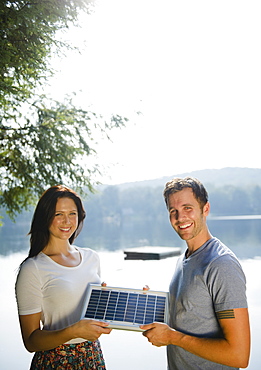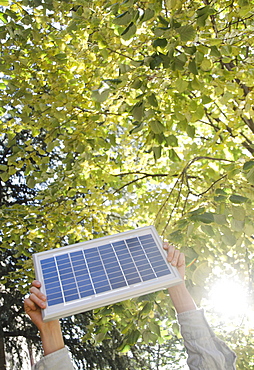Results
9 results found
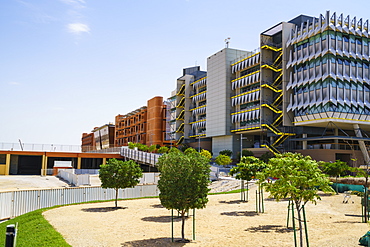
Masdar City, a carbon neutral building project relying on solar energy and other renewable power sources, Abu Dhabi, United Arab Emirates, Middle East
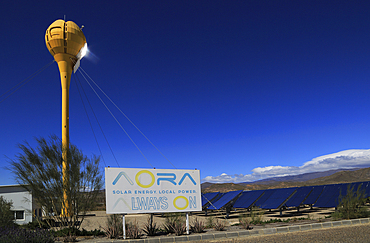
Heliostats reflect sunrays to receiver tower, solar energy scientific research centre, AORA Tulip System, Tabernas, Almeria, Andalusia, Spain, Europe
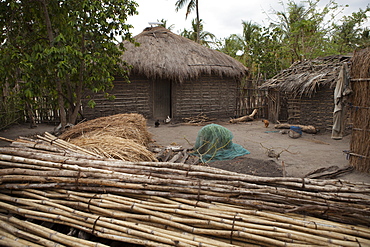
A traditional mud hut home with a thatched roof and a solar panel on the top of it, Tanzania, East Africa, Africa
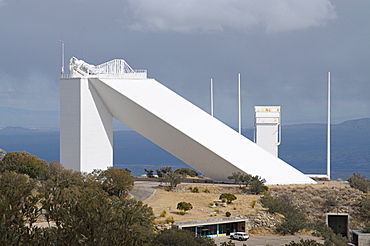
The McMath Solar Telescope, Kitt Peak National Observatory, Arizona, United States of America, North America
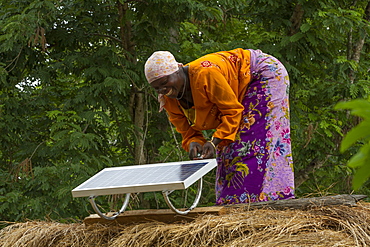
A woman, known as a Solar Mama, fixes a solar panel to the top of a traditional thatched mud hut, Tanzania, East Africa, Africa
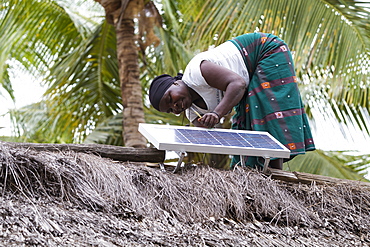
A woman, known as a Solar Mama, fixes a solar panel to the top of a traditional thatched mud hut, Tanzania, East Africa, Africa

A woman walks past a traditional mud hut home with a solar panel on the top of it, Tanzania, East Africa, Africa

A man stands proudly outside his traditional mud hut home which has just been fitted with a solar panel, Tanzania, East Africa, Africa
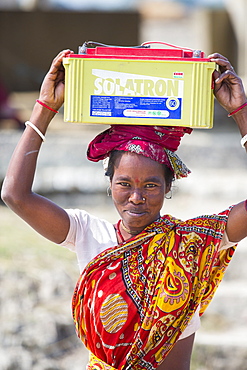
A WWF project to supply electricity to a remote island in the Sunderbans, a low lying area of the Ganges Delta in Eastern India, that is very vulnerable to sea level rise. Prior to this project the subsistence farmers had no access to electricity. The project involves charging large batteries from solar panels. Each villager collects a battery to run household lighting, and returns to the recharging station once a week to recharge their battery. This shot shows women carrying the heavy batteries (20Kg) from the charging station.
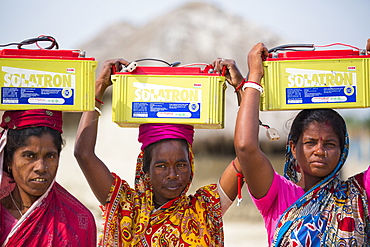
A WWF project to supply electricity to a remote island in the Sunderbans, a low lying area of the Ganges Delta in Eastern India, that is very vulnerable to sea level rise. Prior to this project the subsistence farmers had no access to electricity. The project involves charging large batteries from solar panels. Each villager collects a battery to run household lighting, and returns to the recharging station once a week to recharge their battery. This shot shows women carrying the heavy batteries (20Kg) from the charging station.
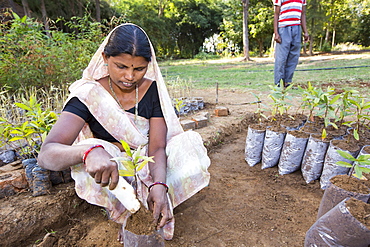
The Muni Seva Ashram in Goraj, near Vadodara, India, is a tranquil haven of humanitarian care. The Ashram is hugely sustainable, next year it will be completely carbon neutral. Its first solar panels were installed in 1984, long before climate change was on anyones agenda. Their energy is provided from solar panels, and wood grown on the estate. Waste food and animal manure is turned inot biogas to run the estates cars and also used for cooking. Solar cookers are also used, and the air conditioning for the hospital is solar run. 70 % of the food used is grown on the estate. They provide an orphanage, schools for all ages, vocational training, care for the elderly, a specialist cancer hospital withstate of the art machinary, and even have a solar crematorium. This shot shows a woman planting trees for onward growth in the Ashrams forests.
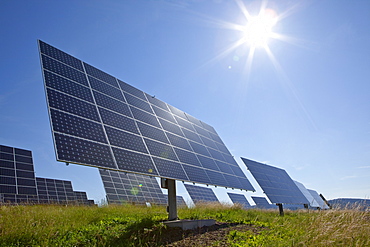
Solar park in summer, close-up of a rotating solar tree following the sun, Lieschensruh, Edertal, Hesse, Germany, Europe
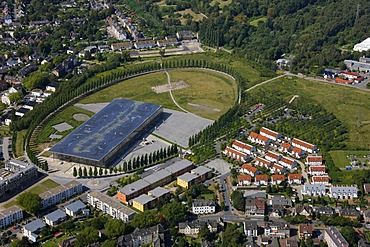
Aerial view, Solarakademie Mt. Cenis solar academy, Sodingen, solar panels, largest solar roof in Europe, Herne, Ruhrgebiet region, North Rhine-Westphalia, Germany, Europe

Entrance arch to Santa Monica Pier, from the Pacific Coast Highway. A popular excursion spot for more than a century, the Santa Monica Pier draws crowds daily. From Wikipedia: "The Santa Monica Pier is a large double-jointed pier located at the foot of Colorado Avenue in Santa Monica, California and is a prominent, 100-year-old landmark. The pier contains Pacific Park, a family amusement park with its one-of-a-kind, state-of-the-art, solar paneled Ferris wheel. It also has an original carousel hippodrome from the 1920s, the Santa Monica Pier Aquarium operated by Heal the Bay, shops, entertainers, a video arcade, a trapeze school, pubs, and restaurants. The west end of the pier is a popular location for anglers.
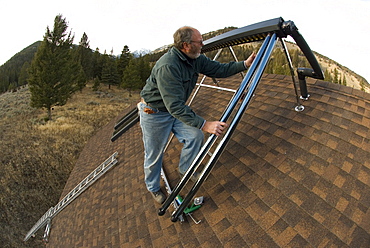
Mike McPherson installs an evacuated tube solar hot water system on a roof of a house near Big Sky, Montana, United States of America
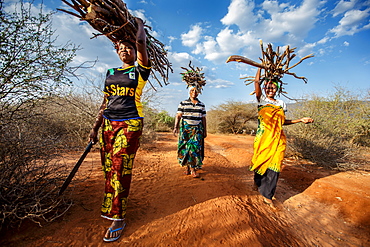
Zainabu Ramadhani, 19, (yellow and red patterned skirt) her mother Fatma Mziray, age 38, (blue head dress) and Fatmaâs sister-in-law Zaitun Hamad, 18, (orange wrap and white top) walk home after gathering firewood near Fatmaâs home in Mforo. Mforo is near Moshi, Tanzania. Fatma Mziray is a Solar Sister entrepreneur who sells both clean cookstoves and solar lanterns. Fatma heard about the cookstoves from a Solar Sister development associate and decided to try one out. The smoke from cooking on her traditional wood stove using firewood was causing her to have a lot of heath problems, her lungs congested her eyes stinging and her doctor told her that she had to stop cooking that way. Some days she felt so bad she couldn't go in to cook. Fatma said, âCooking for a family, preparing breakfast, lunch and dinner I used to gather a large load of wood every day to use. Now with the new cook stove the same load of wood can last up to three weeks of cooking. âWith the extra time I can develop my business. I also have more time for the family. I can monitor my childrenâs studies. All of this makes for a happier family and a better relationship with my husband. Since using the clean cookstove no one has been sick or gone to the hospital due to flu.â Fatma sees herself helping her community because she no longer sees the people that she has sold cookstoves have red eyes, coughing or sick like they used to be. She has been able to help with the school fees for her children, purchase items for the home and a cow. âWhat makes me wake up early every morning and take my cookstoves and go to my business is to be able to take my family to school as well as to get food and other family needs.â
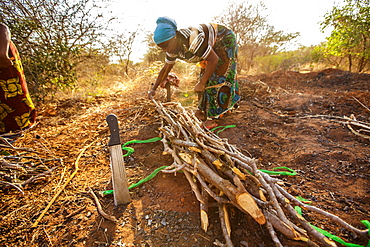
Zainabu Ramadhani, 19, (yellow and red patterned skirt) her mother Fatma Mziray, age 38, (blue head dress) and Fatmaâs sister-in-law Zaitun Hamad, 18, (orange wrap and white top) walk home after gathering firewood near Fatmaâs home in Mforo. Mforo is near Moshi, Tanzania. Fatma Mziray is a Solar Sister entrepreneur who sells both clean cookstoves and solar lanterns. Fatma heard about the cookstoves from a Solar Sister development associate and decided to try one out. The smoke from cooking on her traditional wood stove using firewood was causing her to have a lot of heath problems, her lungs congested her eyes stinging and her doctor told her that she had to stop cooking that way. Some days she felt so bad she couldn't go in to cook. Fatma said, âCooking for a family, preparing breakfast, lunch and dinner I used to gather a large load of wood every day to use. Now with the new cook stove the same load of wood can last up to three weeks of cooking. âWith the extra time I can develop my business. I also have more time for the family. I can monitor my childrenâs studies. All of this makes for a happier family and a better relationship with my husband. Since using the clean cookstove no one has been sick or gone to the hospital due to flu.â Fatma sees herself helping her community because she no longer sees the people that she has sold cookstoves have red eyes, coughing or sick like they used to be. She has been able to help with the school fees for her children, purchase items for the home and a cow. âWhat makes me wake up early every morning and take my cookstoves and go to my business is to be able to take my family to school as well as to get food and other family needs.â

Close-up of solar panels with farm buildings and mountains beyond, near Blythe, California, United States of America
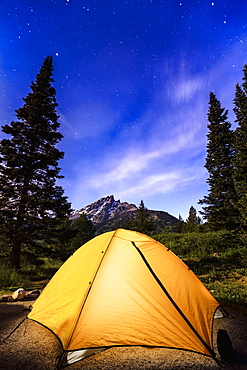
Tent And Milky Way Visible In The Sky Over Teton Range, Grand Teton National Park, Wyoming, United States Of America
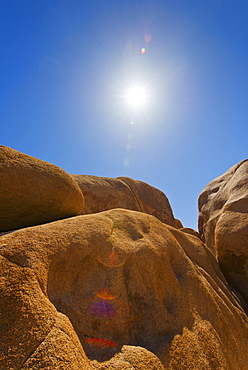
USA, California, Joshua Tree National Park, Desert rocks with solar flare, USA, California, Joshua Tree National Park
